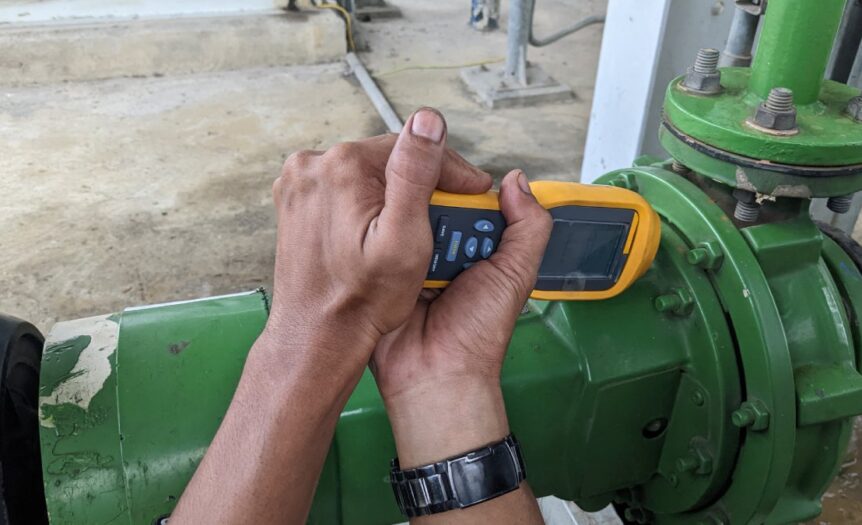In industrial environments, vibrations are a critical factor that can significantly impact the efficiency and safety of machinery and structures. Understanding the sources and effects of vibrations is essential for professionals who are responsible for maintaining the operational integrity of industrial facilities. These vibrations, often caused by mechanical operations, equipment malfunctions, or external influences, can lead to equipment wear, reduced performance, and costly downtimes. By monitoring and managing vibrations effectively, industry operators can improve maintenance strategies, enhance equipment longevity, and ensure a safer working environment.
What Causes Vibrations in Industrial Settings?
Of all the things to know about vibrations in industrial environments, the causes of this problem are perhaps the most important. Common causes include mechanical imbalance in rotating machinery, which can lead to uneven distribution of mass and result in excessive vibrations. Misalignment of machine components is another prevalent issue, often due to improper installation or wear over time, which generates vibrations as parts do not move in sync. Additionally, loose fasteners or aging infrastructure may exacerbate vibrational intensity, affecting the entire facility’s stability. External factors, such as seismic activities or adjacent heavy machinery, also contribute to excessive vibrations.
The Impact of Excessive Vibrations
Excessive vibrations in industrial settings can have far-reaching consequences on both machinery and personnel. On the equipment side, persistent vibrations can lead to increased wear and tear, premature equipment failure, and unexpected downtimes, which are both costly and disruptive to production schedules. Furthermore, these vibrations can loosen joints and connections, leading to leaks or structural failures over time. For personnel, prolonged exposure to high levels of vibrations can pose serious health risks, including stress, fatigue, and even long-term musculoskeletal disorders.
Monitoring and Mitigating Vibrations
Industries employ a range of strategies and technologies to monitor and mitigate vibrations effectively. Advanced vibration analysis tools, such as accelerometers and vibration sensors, are used to detect and quantify vibration levels, providing critical data that can be analyzed to predict potential failures before they occur. Predictive maintenance programs utilize this data, enabling operators to schedule maintenance activities during planned downtimes, thus minimizing disruptions. Additionally, implementing design improvements, such as enhancing structural supports or using vibration-dampening materials, can significantly reduce the impact of vibrations on equipment and infrastructure. These basic practices are applicable maintenance strategies for industrial electric motors and other related heavy equipment in your facility.
How AI Can Help Manage Vibrations
Artificial intelligence (AI) offers promising advancements in managing vibrations within industrial environments. By leveraging machine learning algorithms and real-time data analytics, AI systems can continuously monitor vibration patterns and detect anomalies with greater precision than traditional methods. These systems can adapt and learn from historical data, optimizing predictive maintenance schedules and reducing unexpected downtimes. AI can also integrate with IoT devices to provide automated responses in case of vibration exceeding preset thresholds, thereby enhancing the overall resilience and efficiency of industrial operations.
Understanding what to know about vibrations in industrial environments is essential for maintaining a safe and productive workplace. From using vibration analysis tools to implementing predictive maintenance programs and utilizing AI solutions, staying informed about vibrating concerns is crucial in today’s fast-paced business world.










 Deering Estate
Deering Estate
 Massage Envy South Miami
Massage Envy South Miami
 Calla Blow Dry
Calla Blow Dry
 My Derma Clinic
My Derma Clinic
 Sushi Maki
Sushi Maki
 Sports Grill
Sports Grill
 The Healthy Kitchen
The Healthy Kitchen
 Golden Rule Seafood
Golden Rule Seafood
 Malanga Cuban Café
Malanga Cuban Café

 Kathleen Ballard
Kathleen Ballard
 Panter, Panter & Sampedro
Panter, Panter & Sampedro
 Vintage Liquors
Vintage Liquors
 The Dog from Ipanema
The Dog from Ipanema
 Rubinstein Family Chiropractic
Rubinstein Family Chiropractic
 Your Pet’s Best
Your Pet’s Best
 Indigo Republic
Indigo Republic




 ATR Luxury Homes
ATR Luxury Homes


 2112 Design Studio
2112 Design Studio
 Hamilton Fox & Company
Hamilton Fox & Company
 Creative Design Services
Creative Design Services
 Best Pest Professionals
Best Pest Professionals
 HD Tree Services
HD Tree Services
 Trinity Air Conditioning Company
Trinity Air Conditioning Company
 Cisca Construction & Development
Cisca Construction & Development
 Mosquito Joe
Mosquito Joe
 Cutler Bay Solar Solutions
Cutler Bay Solar Solutions


 Miami Royal Ballet & Dance
Miami Royal Ballet & Dance
 Christopher Columbus
Christopher Columbus
 Pineview Preschools
Pineview Preschools
 Westminster
Westminster
 Carrollton
Carrollton
 Lil’ Jungle
Lil’ Jungle
 Frost Science Museum
Frost Science Museum
 Palmer Trinity School
Palmer Trinity School
 South Florida Music
South Florida Music
 Pinecrest Orthodontics
Pinecrest Orthodontics
 Dr. Bob Pediatric Dentist
Dr. Bob Pediatric Dentist
 d.pediatrics
d.pediatrics
 South Miami Women’s Health
South Miami Women’s Health

 The Spot Barbershop
The Spot Barbershop
 My Derma Clinic
My Derma Clinic




 Miami Dance Project
Miami Dance Project

 Rubinstein Family Chiropractic
Rubinstein Family Chiropractic
 Indigo Republic
Indigo Republic

 Safes Universe
Safes Universe
 Vintage Liquors
Vintage Liquors
 Evenings Delight
Evenings Delight





 Atchana’s Homegrown Thai
Atchana’s Homegrown Thai
 Baptist Health South Florida
Baptist Health South Florida

 Laser Eye Center of Miami
Laser Eye Center of Miami
 Visiting Angels
Visiting Angels
 OpusCare of South Florida
OpusCare of South Florida

 Your Pet’s Best
Your Pet’s Best





 HD Tree Services
HD Tree Services
 Hamilton Fox & Company
Hamilton Fox & Company


 Creative Design Services
Creative Design Services